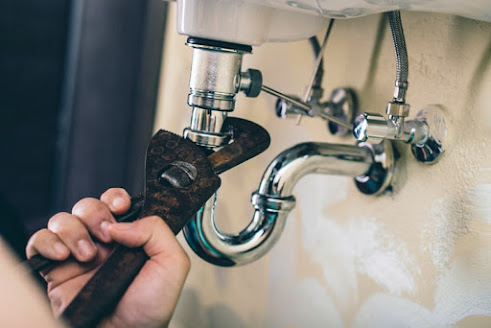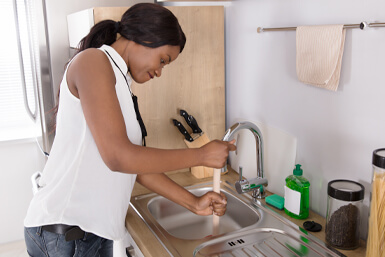Everybody seems to have their own unique rationale involving Diagnose Unwanted Plumbing Noises.

To identify loud plumbing, it is necessary to determine initial whether the unwanted sounds occur on the system's inlet side-in other words, when water is turned on-or on the drainpipe side. Sounds on the inlet side have varied causes: extreme water stress, used valve and tap components, poorly connected pumps or various other appliances, incorrectly put pipeline bolts, and also plumbing runs containing too many tight bends or other limitations. Sounds on the drainpipe side generally originate from inadequate location or, as with some inlet side noise, a design consisting of limited bends.
Hissing
Hissing sound that takes place when a tap is opened a little generally signals excessive water pressure. Consult your local water company if you think this issue; it will certainly have the ability to tell you the water pressure in your area as well as can set up a pressurereducing shutoff on the inbound water system pipeline if needed.
Various Other Inlet Side Noises
Squeaking, squealing, scraping, breaking, and also touching generally are brought on by the development or tightening of pipelines, normally copper ones providing hot water. The noises happen as the pipelines slide against loose fasteners or strike nearby house framing. You can usually pinpoint the location of the problem if the pipelines are revealed; simply comply with the noise when the pipes are making noise. Most likely you will certainly uncover a loosened pipe hanger or an area where pipelines exist so near to floor joists or other framing items that they clatter versus them. Connecting foam pipe insulation around the pipes at the point of call must correct the issue. Be sure bands and also hangers are protected and give appropriate support. Where possible, pipeline fasteners should be affixed to enormous structural aspects such as foundation wall surfaces rather than to mounting; doing so minimizes the transmission of vibrations from plumbing to surface areas that can enhance as well as move them. If connecting fasteners to framework is inevitable, wrap pipelines with insulation or other resistant material where they contact bolts, and sandwich completions of new fasteners in between rubber washers when mounting them.
Dealing with plumbing runs that experience flow-restricting tight or countless bends is a last hope that should be taken on only after speaking with a knowledgeable plumbing specialist. Unfortunately, this scenario is relatively usual in older homes that might not have been constructed with indoor plumbing or that have actually seen a number of remodels, specifically by novices.
Babbling or Shrieking
Extreme chattering or screeching that takes place when a valve or tap is turned on, which usually vanishes when the fitting is opened completely, signals loosened or defective inner parts. The option is to change the shutoff or faucet with a new one.
Pumps and also appliances such as cleaning machines as well as dishwashers can move electric motor noise to pipelines if they are improperly linked. Connect such products to plumbing with plastic or rubber hoses-never inflexible pipe-to isolate them.
Drain Sound
On the drain side of plumbing, the chief objectives are to eliminate surfaces that can be struck by dropping or rushing water as well as to shield pipelines to include inescapable audios.
In new building and construction, bath tubs, shower stalls, toilets, as well as wallmounted sinks and also basins ought to be set on or versus resistant underlayments to reduce the transmission of noise with them. Water-saving commodes and faucets are much less loud than conventional models; install them rather than older types even if codes in your location still allow utilizing older components.
Drains that do not run up and down to the basement or that branch right into horizontal pipe runs supported at flooring joists or other framing existing especially frustrating noise issues. Such pipelines are huge enough to radiate substantial resonance; they also bring substantial amounts of water, which makes the circumstance even worse. In brand-new construction, specify cast-iron soil pipes (the big pipelines that drain pipes toilets) if you can afford them. Their enormity has a lot of the noise made by water going through them. Likewise, prevent transmitting drains in wall surfaces shared with bedrooms as well as spaces where individuals collect. Wall surfaces containing drainpipes ought to be soundproofed as was explained previously, utilizing double panels of sound-insulating fiberboard as well as wallboard. Pipelines themselves can be covered with unique fiberglass insulation created the objective; such pipelines have an impervious vinyl skin (sometimes consisting of lead). Outcomes are not always adequate.
Thudding
Thudding sound, usually accompanied by trembling pipes, when a faucet or home appliance valve is shut off is a condition called water hammer. The noise as well as vibration are triggered by the reverberating wave of pressure in the water, which all of a sudden has no place to go. In some cases opening a shutoff that releases water rapidly into a section of piping containing a restriction, joint, or tee fitting can generate the very same problem.
Water hammer can generally be treated by setting up fittings called air chambers or shock absorbers in the plumbing to which the problem valves or taps are attached. These gadgets enable the shock wave produced by the halted flow of water to dissipate in the air they have, which (unlike water) is compressible.
Older plumbing systems might have brief vertical sections of capped pipe behind wall surfaces on tap runs for the same purpose; these can at some point loaded with water, minimizing or ruining their effectiveness. The cure is to drain pipes the water supply completely by shutting off the major supply of water valve and also opening up all faucets. Then open up the primary supply valve and shut the faucets one at a time, beginning with the tap nearest the valve and also finishing with the one farthest away.
If Your Plumbing is Making These Sounds, There’s a Problem
A Bang or Thump When You Turn Off a Faucet
If a loud bang or thump greets you each time your turn off running water, you likely have a water hammer. A water hammer occurs when the water velocity is brought to a halt, sending a shock wave through the pipe. It can be pretty jarring — even worse, damaging to your plumbing system. All that thudding could loosen connections.
Strange Toilet Noises
You’re so familiar with the sounds your toilet makes that your ears will be attuned to anything out of the ordinary. Fortunately, most unusual toilet noises can be narrowed down to just one of several problems.
Foghorn sound:
Open the toilet tank Flush the toilet When you hear the foghorn noise, lift the float to the top of the tank If you’re ambitious, you can remove the ballcock valve and disassemble it to replace the washer. Or you can more easily replace the ballcock valve entirely. This device is relatively inexpensive and available at most any hardware store.
Persistent hissing:
The hissing following a flush is the sound of the tank filling. It should stop once the tank is full. But if the hissing continues, it’s likely because water is leaking out of the tank. The rubber flap at the bottom of the tank can degrade, letting water slip through and into the bowl. That’s why the tank is refilling continuously. Fortunately, this is an easy fix:
Cut the water to the toilet by closing the shutoff valve on the water supply line. Flush the toilet to drain the tank. Disconnect the flapper Attach the new flapper Gurgling or bubbling:
Gurgling or bubbling suggests negative air pressure in the drain line, likely resulting from a clog. As air releases, it causes the water in the toilet to bubble. This could either be a minor issue or a major one, depending on the clog’s severity. Clogs can be caused by toilet paper or more stubborn obstructions such as tree roots. If you can’t work out the clog with a plunger, contact a professional plumber for assistance because a clog of this magnitude could lead to filthy and unsanitary sewage backups in your sink bathtub.

As a devoted reader about Why Do My Pipes Make Noises, I imagined sharing that chunk was a smart idea. Do you know about somebody else who is interested in the niche? Take a moment to promote it. I take joy in reading our article about How To Fix Noisy Pipes.
Book Instantly